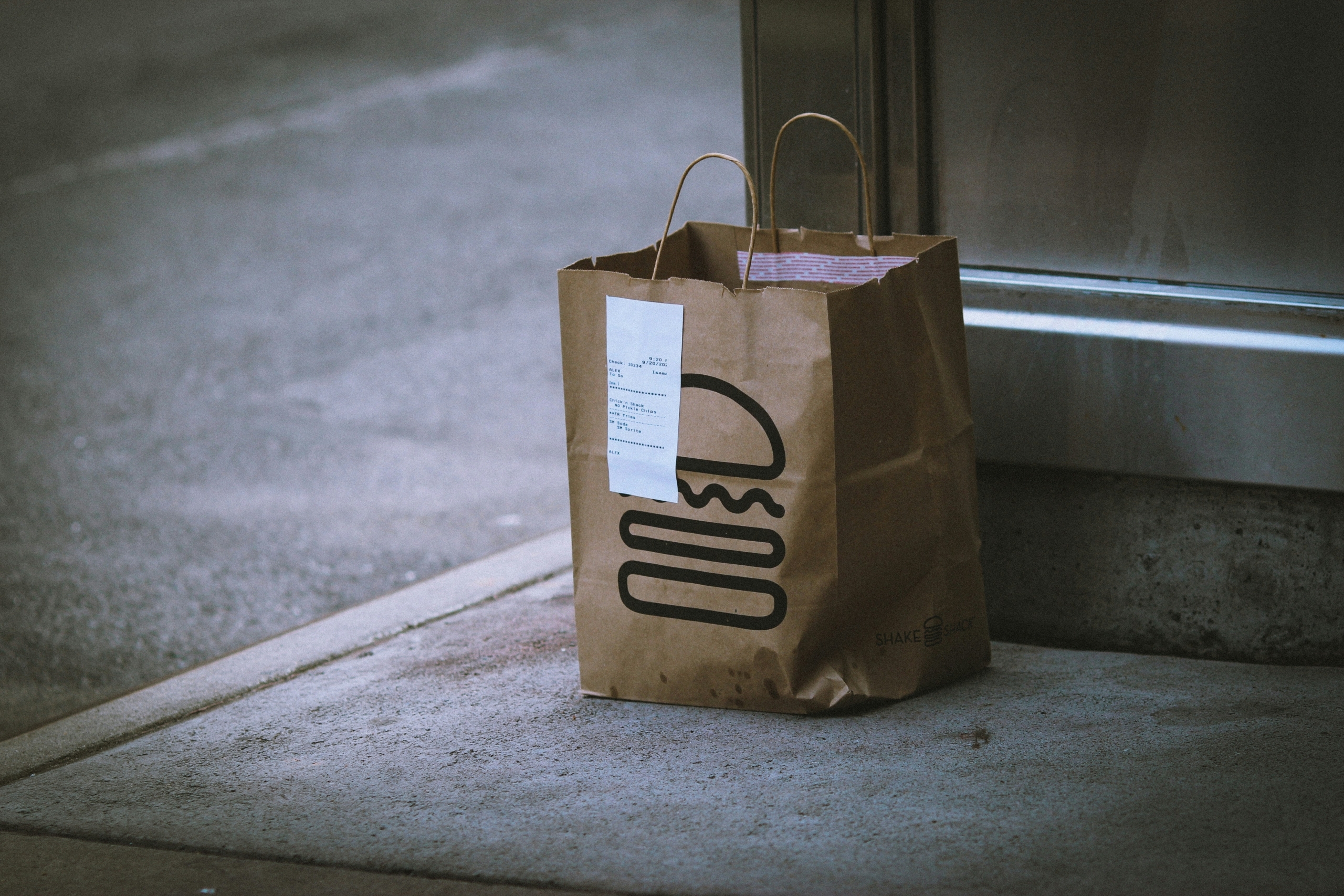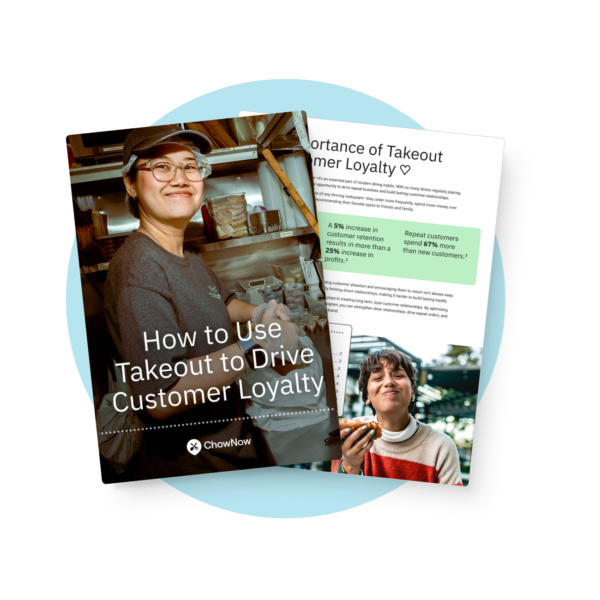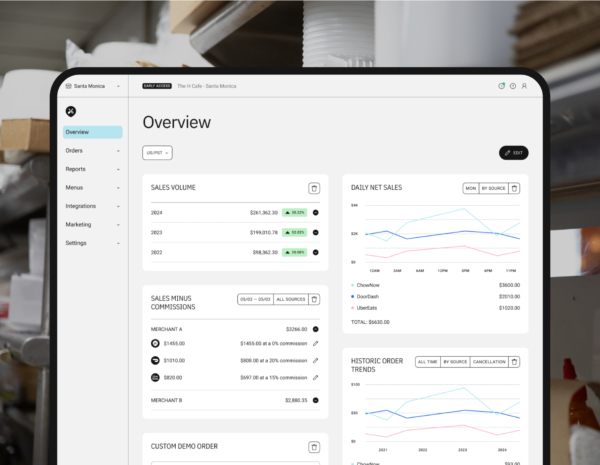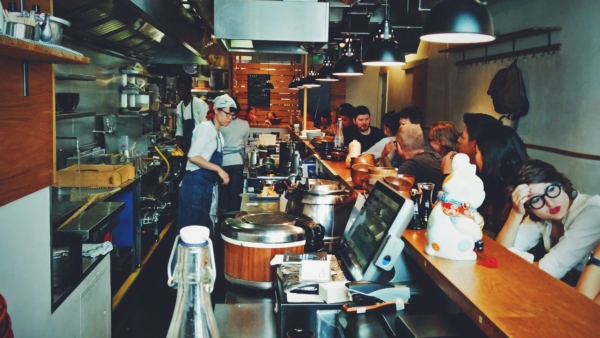10 KPIs for Online Food Delivery Every Restaurant Needs

If you’re one of the thousands of restaurants that added online food delivery in recent years, you might be wondering: is it actually helping my business grow?
The only way to know for sure is by tracking key performance indicators (KPIs) that drive business growth.
These metrics give you a clear picture of your delivery performance—from order volume and customer retention to delivery speed and profitability.
Without KPIs, spotting inefficiencies in your workflow is nearly impossible—leaving you without the data needed to make informed decisions and grow your online sales.
In this article, you’ll learn:
- The 10 KPIs for online food delivery every restaurant should monitor
- Why these metrics matter to your business
- How to track and improve them
Let’s dive into the KPIs that can make or break your online delivery strategy.
10 Online Food Delivery Key Performance Indicators (KPIs) to Monitor
Next, we’ll break down the essential food delivery KPIs every restaurant should track—and how each one impacts the success of your online ordering operations.
Order Acceptance Time
Order acceptance time measures how long it takes for a restaurant to acknowledge and confirm an online order. This might seem like a small detail, but it plays a big role in the overall delivery experience and significantly impacts customer experience.
A slow acceptance time can lead to delays, frustrated customers, and even cancelled orders—especially if they assume the restaurant is too busy to fulfill their request.
The longer it takes for a restaurant to accept an order, the later the kitchen starts preparing it, which pushes back the pickup time for drivers and extends the overall delivery window.
How to optimize order acceptance time
One of the easiest ways to improve this KPI is by automating the order acceptance process.
For example, ChowNow offers an auto-accept feature, which instantly confirms incoming orders instead of requiring busy staff members to manually approve every order.
This eliminates the chance of human error and ensures orders move straight to the kitchen.
Order Preparation Time
Order preparation time is the time it takes for a kitchen to make an order once it’s been accepted.
This KPI directly impacts delivery speed—longer prep times mean slower deliveries, while efficient workflows help keep orders on time and moving out the door at a steady pace.
Factors that affect prep time
- Staffing levels: Understaffed kitchens struggle to keep up with high order volumes.
- Order complexity: Dishes with multiple steps or long cook times slow down the process.
- Workflow inefficiencies: Poor kitchen organization, miscommunication, or a lack of prep work can add unnecessary delays.
How to improve it
Streamlining kitchen operations is key to reducing prep time.
Restaurants can optimize their menu by highlighting delivery-friendly items, improve kitchen workflows through better station organization, and track prep times to identify bottlenecks.
For example, train kitchen staff to prepare orders in the order they were received.
Cooks may sometimes prioritize easier tickets to clear the queue faster, but this can delay more complex orders and throw off delivery times.
Order Accuracy Rate
Customer loyalty is significantly impacted by the order accuracy rate, which measures how often customers receive exactly what they ordered. Mistakes—like missing items, incorrect modifications, or the wrong dish—can lead to refunds, negative reviews, and lost repeat business.
How to track and improve order accuracy
Restaurants can track accuracy by monitoring refund trends, conducting random order audits, and collecting customer feedback.
If mistakes are common, consider these fixes:
- Standardized packing procedures: Use a designated “final check” station to catch errors.
- Staff training: Ensure employees double-check orders before sealing bags.
- Printed labels and checklists: Attach receipts and verify modifiers before handoff.
How POS integrations can help
Most mistakes happen because staff are manually re-entering online orders.
Using POS integration eliminates this risk by sending orders directly to the kitchen, reducing human errors, and ensuring customers receive exactly what they ordered.
For example, ChowNow integrates with most POS systems—meaning customers get exactly what they ordered every time.
Total Number of Online Orders
Tracking the total number of online orders gives restaurants a clear view of their online ordering growth and contributes to online food delivery success.
A steady increase in orders can indicate strong demand and effective marketing, while a decline may signal issues like poor visibility, unhappy customers, or more competition in your area.
What Impacts Order Volume?
- Seasonality: Demand can fluctuate based on the time of year—for example, colder months often see more delivery orders because diners don’t want to leave home.
- Promotions & Discounts: Limited-time deals and loyalty programs can incentivize more online orders.
- Menu Updates: Introducing new items or making existing offerings more appealing can attract more customers.
How to track and improve it
Closely monitoring data over time helps restaurants identify trends and adjust their strategy.
Tracking order volume alongside other KPIs—like average order value and repeat customer rate—can provide deeper insights into what’s driving growth and where improvements can be made.
Revenue per Order
Revenue per order tells you how much money your restaurant earns from each individual online sale. It’s a crucial metric for understanding the profitability and operational efficiency of your delivery service—especially after taking into account food costs, packaging, labor, and delivery platform fees.
A high order count doesn’t always equal high profits—this KPI helps you focus on what each sale is actually worth.
How pricing and menu strategy affect revenue
Several factors influence revenue per order, including:
- Pricing strategy.
- Portion size.
- How well your menu is optimized for delivery.
Underpriced items or high-cost ingredients can drag this number down.
On the other side of that, bundling meals or offering premium options can raise the average revenue without significantly increasing workload.
How to increase revenue per order
There are a few smart ways to boost this number:
- Add premium upgrades: Offer protein add-ons, extra sauces, or sides for a small upcharge.
- Use menu engineering: Highlight high-margin items or bundle popular combos to drive more value.
- Review delivery pricing: Make sure delivery menu prices reflect the added costs of packaging and fees.
Keeping an eye on this KPI makes sure you’re not just busy—but profitable.
Average Order Value (AOV)
Average Order Value (AOV) measures the average amount a customer spends per order.
It’s a straightforward but powerful metric: the higher your AOV, the more revenue you’re generating without increasing order volume.
Boosting AOV is one of the most effective ways to improve profitability—especially in delivery, where every order comes with added costs like packaging, labor, and service fees.
How to increase average order value
There are several proven strategies to nudge customers toward spending more per order:
- Upselling: Suggest premium add-ons or larger portions during checkout.
- Bundling: Offer meal deals that combine entrées, sides, and drinks at a slight discount.
- Loyalty programs: Reward higher spending with points or discounts to encourage larger purchases.
Even small increases in AOV can add up quickly, especially when paired with high-order volume.
What influences average order value
AOV can be affected by how your online ordering system is set up.
For example, clear item descriptions, attractive photos, and intuitive upsell prompts can make it easier for customers to add more to their carts.
Also, the online ordering system you use can impact AOV.
Direct ordering systems often give you more control over upselling and promotions, while third-party apps may limit how you communicate with customers or customize the ordering experience.
For more information on how to improve your AOV, read our article 7 Strategies To Increase Your Restaurant’s Average Order Volume.
Customer Satisfaction Ratings
With delivery, you don’t get the chance to greet customers at the door, check on how they’re doing, or fix mistakes in real-time to improve customer satisfaction.
That makes customer satisfaction ratings and reviews one of the only ways to understand how your delivery experience is actually landing.
These ratings provide valuable feedback, and if you’re paying attention, they can become your roadmap for better customer service.
How they impact future sales
Customers rely heavily on reviews before placing an order. A few low-star ratings or repeated complaints can seriously hurt your visibility and sales on delivery platforms.
On the flip side, consistently high ratings build trust and keep new customers coming in.
How to improve customer satisfaction ratings
Focus on the basics:
- Faster delivery: Speed matters. Make sure your process doesn’t keep food waiting.
- Better packaging: Invest in containers that maintain temperature and prevent spills.
- Order accuracy: Double-check orders before they go out to avoid mistakes.
- Respond to feedback: Whether it’s thanking a happy customer or addressing a complaint, showing you care helps build loyalty.
Tracking and responding to customer satisfaction feedback helps you spot issues early and create a delivery experience that improves your customer retention.
Most Popular Menu Items
Tracking bestsellers means knowing which menu items sell the most, giving you a clear advantage when making decisions about pricing, promotions, and inventory.
If certain dishes consistently outperform others, you can lean into those strengths—highlighting them in marketing, bundling them for better value, or even creating spin-off variations to maximize sales.
You’ll also know which dishes to cut—saving you money in wasted food and labor.
How to use this data
Tracking top-selling items isn’t just about celebrating what’s working—it’s about refining your menu to improve efficiency and profitability.
Restaurants can use this data to:
- Streamline inventory: Stock up on high-demand ingredients and reduce waste from underperforming dishes.
- Optimize promotions: Feature bestsellers in special deals to encourage repeat purchases.
- Adjust pricing: If a dish is in high demand, a slight price increase can boost revenue without hurting sales.
Leveraging bestsellers for growth
Once you’ve identified your top-performing dishes, make sure customers know about them.
Featuring them on your order page, using high-quality images, and labeling them as “most popular” or “customer favorites” can drive even more orders.
For example, Emporium Thai in LA does an excellent job of highlighting their popular items first on their direct online ordering page.
Repeat Customer Rate
80% of sales come from repeat customers—they’re more profitable, cost less to market to, and are more likely to recommend your restaurant to others.
A high repeat customer rate is a strong indicator that your food, service, and delivery experience are consistently hitting the mark.
How to improve repeat business
- Launch a loyalty program: Incentivize return visits with rewards, points, or discounts.
- Use personalized marketing: Send targeted messages or offers based on past orders or preferences.
- Deliver consistently great service: Fast delivery, accurate orders, and quality food give customers a reason to come back.
- Following up post-order: Thank-you emails, review requests, or discount codes for a future visit keep you top-of-mind.
For example, this is an example of a promotional email sent by ChowNow that would encourage repeat visits.

Tracking repeat customers over time
Monitoring how often customers return—and what brings them back—helps you fine-tune your marketing efforts and build stronger relationships. A higher repeat customer rate means you’re not just getting attention; you’re earning trust and long-term loyalty.
Refund and Discount Totals
Refunds and discounts may seem like small line items, but over time, they can seriously eat into your profits.
Tracking how much you’re giving back—or giving away—helps you understand the financial impact of order issues or overly aggressive promotions.
Spotting patterns and fixing root issues
- Recurring refund reasons: Are customers reporting the same issue repeatedly? That could point to a larger operational problem.
- Discount overuse: Are discounts being used to cover up service gaps or just handed out too freely?
Identifying patterns allows you to fix the underlying problems—whether that’s retraining staff, updating packaging, or revising procedures.
Be strategic with your discounts
Not all discounts are bad—but they should be intentional.
Use promotions to drive first-time orders, increase average order value, or bring back lapsed customers. Avoid blanket discounts that lower your margins without a clear return.
Set internal guidelines so your team knows when and how to use discounts without hurting the bottom line.
How to Track & Improve These Key Performance Indicators
Tracking KPIs doesn’t have to be complicated—especially with the right tools in place.
Restaurant technology has come a long way, and today’s platforms can automatically gather, organize, and display performance data in real-time. This allows operators to monitor key metrics without getting bogged down in spreadsheets or manual reporting. Restaurant data analytics plays a crucial role in tracking and improving KPIs by providing actionable insights that enhance decision-making and optimize performance.
How a centralized order management system helps
A centralized order management system can be especially helpful, bringing orders from all your delivery channels into one dashboard.
This kind of visibility makes it easier to spot trends, identify issues, and react quickly—whether it’s adjusting prep times, fixing accuracy issues, or updating your menu based on sales data.
Setting benchmarks and driving improvements
Tracking KPIs is only useful if you act on the data. Set internal benchmarks for each KPI based on your current performance and establish realistic improvement goals.
For example, aim to reduce average prep time by 2 minutes or increase AOV by 10% over the next quarter. Regularly review these numbers with your team so everyone is aligned on what success looks like and how to get there.
Consistent tracking + clear goals = smarter operations and better results.
Improve Your Delivery Operations
When you can understand exactly what’s driving your business and why customers come back (or don’t), you stop playing the guessing game and start running a delivery operation that actually grows your business.
Contact ChowNow to see how our Order Aggregation and Centralized Reporting tools can help you simplify delivery operations and get accurate, real-time insights into your restaurant’s performance.






